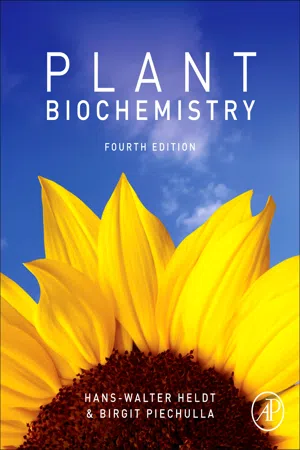
Plant Biochemistry
Hans-Walter Heldt,Birgit Piechulla
- 656 páginas
- English
- ePUB (apto para móviles)
- Disponible en iOS y Android
Plant Biochemistry
Hans-Walter Heldt,Birgit Piechulla
Información del libro
The fully revised and expanded fourth edition of Plant Biochemistry presents the latest science on the molecular mechanisms of plant life. The book not only covers the basic principles of plant biology, such as photosynthesis, primary and secondary metabolism, the function of phytohormones, plant genetics, and plant biotechnology, but it also addresses the various commercial applications of plant biochemistry. Plant biochemistry is not only an important field of basic science explaining the molecular function of a plant, but is also an applied science that is in the position to contribute to the solution of agricultural and pharmaceutical problems.
Plants are the source of important industrial raw material such as fat and starch but they are also the basis for the production of pharmaceutics. It is expected that in the future, gene technology will lead to the extensive use of plants as a means of producing sustainable raw material for industrial purposes. As such, the techniques and use of genetic engineering to improve crop plants and to provide sustainable raw materials for the chemical and pharmaceutical industries are described in this edition. The latest research findings have been included, and areas of future research are identified.
- Offers the latest research findings in a concise and understandable manner
- Presents plant metabolism in the context of the structure and the function of plants
- Includes more than 300 two-color diagrams and metabolic schemes
- Covers the various commercial applications of plant biochemistry
- Provides extensive references to the recent scientific literature
Preguntas frecuentes
Información
1 A leaf cell consists of several metabolic compartments
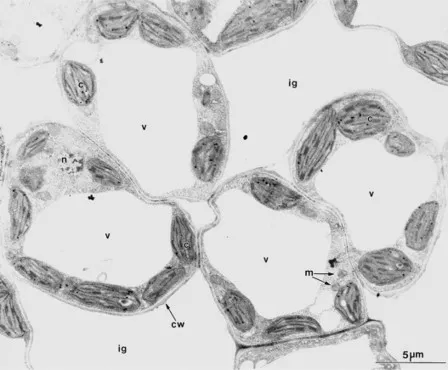
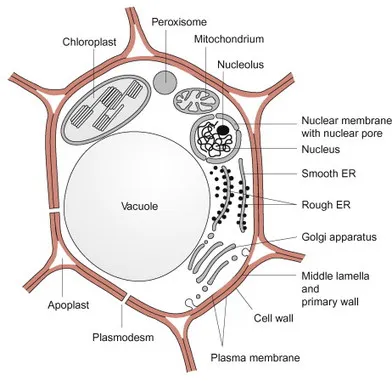
| Percent of the total cell volume | Functions (incomplete) | |
| Vacuole | 79 | Maintenance of cell turgor. |
| Store of, e.g., nitrate, glucose and storage proteins, intermediary store for secretory proteins, reaction site of lytic enzymes and waste depository | ||
| Chloroplasts | 16 | Photosynthesis, synthesis of starch and lipids |
| Cytosol | 3 | General metabolic compartment, synthesis of sucrose |
| Mitochondria | 0.5 | Cell respiration |
| Nucleus | 0.3 | Contains the genome of the cell. Reaction site of replication and transcription |
| Peroxisomes | Reaction site for processes in which toxic intermediates, such as H2O2 and glyoxylate, are formed and eliminated | |
| Endoplasmic reticulum | Storage of Ca++ ions, participation in the export of proteins from the cell and in the transport of newly synthesized proteins into the vacuole and their secretion from the cell | |
| Oil bodies (oleosomes) | Storage of triacylglycerols | |
| Golgi bodies | Processing and sorting of proteins destined for export from the cells or transport into the vacuole | |
| * Mesophyll cells of spinach; data by Winter, Robinson, and Heldt (1994). | ||

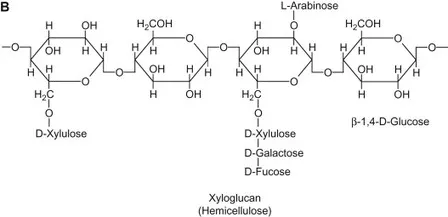

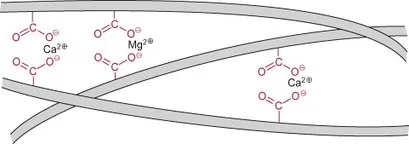
Índice
- Cover
- Title Page
- Copyright
- Dedication
- Table of Contents
- Preface
- Introduction
- Chapter 1: A Leaf Cell Consists of Several Metabolic Compartments
- Chapter 2: The Use of Energy from Sunlight by Photosynthesis is the Basis of Life on Earth
- Chapter 3: Photosynthesis is an Electron Transport Process
- Chapter 4: ATP is Generated by Photosynthesis
- Chapter 5: Mitochondria are the Power Station of the Cell
- Chapter 6: The Calvin Cycle Catalyzes Photosynthetic CO2 Assimilation
- Chapter 7: Phosphoglycolate Formed by the Oxygenase Activity of Rubisco is Recycled in the Photorespiratory Pathway
- Chapter 8: Photosynthesis Implies the Consumption of Water
- Chapter 9: Polysaccharides are Storage and Transport Forms of Carbohydrates Produced by Photosynthesis
- Chapter 10: Nitrate Assimilation is Essential for the Synthesis of Organic Matter
- Chapter 11: Nitrogen Fixation Enables Plants to use the Nitrogen of the Air for Growth
- Chapter 12: Sulfate Assimilation Enables the Synthesis of Sulfur Containing Compounds
- Chapter 13: Phloem Transport Distributes Photoassimilates to the Various Sites of Consumption and Storage
- Chapter 14: Products of Nitrate Assimilation are Deposited in Plants as Storage Proteins
- Chapter 15: Lipids are Membrane Constituents and Function as Carbon Stores
- Chapter 16: Secondary Metabolites Fulfill Specific Ecological Functions in Plants
- Chapter 17: A Large Diversity of Isoprenoids has Multiple Functions in Plant Metabolism
- Chapter 18: Phenylpropanoids Comprise a Multitude of Plant Secondary Metabolites and Cell Wall Components
- Chapter 19: Multiple Signals Regulate the Growth and Development of Plant Organs and Enable Their Adaptation to Environmental Conditions
- Chapter 20: A Plant Cell has Three Different Genomes
- Chapter 21: Protein Biosynthesis Occurs in Three Different Locations of a Cell
- Chapter 22: Biotechnology Alters Plants to Meet Requirements of Agriculture, Nutrition and Industry
- Index